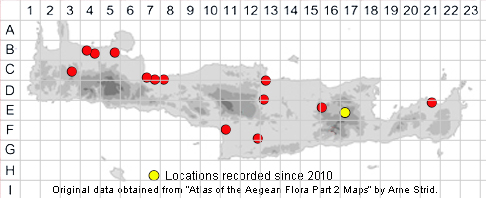ALISMA LANCEOLATUM
Family and Genus:- See- ALISMATACEAE
Common name:- Narrow-leaved water-plantain
Homotypic Synonyms:- Alisma major var. lanceolatum,Alisma plantago-
aquatica var. lanceolatum, Alisma plantago-aquatica subsp. lanceolatum.
Alisma plantago-aquatica f. lanceolatum.
Meaning:- Alisma (Gr) Used by the Greek physician Dioscorides for a plantain-
leaved water plant.
Lanceolatum (L) Lance-shaped (reference to the leaves).
General description:- A perennial herb growing in water or mud up to 100 cm tall.
Leaves:-
1) Up to 27 x 7.5 cm. but usually smaller.
2) Aerial, ovate to lance-shaped, cuneate at the base, more or less rounded but
narrowing gradually to a point at the tip.
Flowers:-
1) Petals, 3, formed in a wide array. 4.5-6.5 mm. purplish-pink.
2) Styles, stigmatose in the upper 1/2-2/3.
Fruit:-
1) Seed, single tiny, dry, up to 2 or 3 mm long. Clustered into an aggregate fruit of
about 20 units.
3) Fruitlets, with thin translucent lateral pericarp.
Key feature:-
1) Leaves, lanceolate to elliptical, cuneate at the base.
2) Styles, stigmatose in the upper 1/2-2/3.
3) Fruitlets, with thin translucent lateral pericarp.
Habitat:- Water courses, ponds, riverbeds, muddy and damp areas, marshy
ground.
Distribution:- A native to Eurasia and North Africa, it is widespread around the
Mediterranean. On Crete it is rare with limited distribution found only in marshy
areas.
Flowering time:- June-Aug.
Photo by:- Steve Lenton
Comments:-
All European species of this family grow in marshes or in shallow water at the
edges of lakes, ponds, canals or slow rivers. Most of them, when growing in water,
can produce linear, phyllodal submerged leaves which may or may not persist.
When growing in relatively dry habitats the plants are usually dwarfed and may be
misleadingly different from plants growing in wetter conditions.
SPECIES DESCRIPTION

Hover Mouse over yellow location marker to show Conributor
